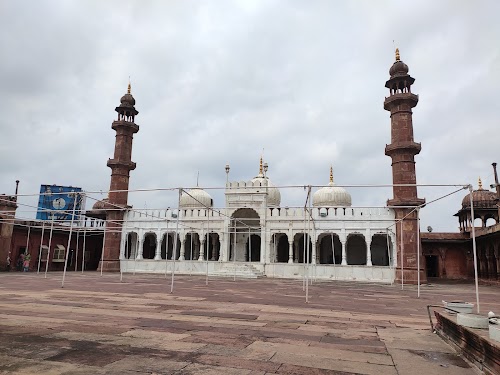
Moti Masjid
Bhopal, India
- Admire the white marble architecture.
- Explore the mosque's courtyard.
- Learn about the Begum's history.
- Offer prayers in the serene environment.
- Photography of the mosque and minarets.
Known for:
Description:
Moti Masjid, also known as the Pearl Mosque, is a significant historical and architectural landmark in Bhopal. This stunning mosque, reminiscent of the Jama Masjid in Delhi, stands as a testament to the city's rich Islamic heritage. Its pristine white marble facade gleams under the sun, creating a captivating sight. The mosque features two dark red minarets that add contrast to the overall structure. The serene atmosphere and intricate details of the architecture make it a must-visit destination for tourists seeking to explore Bhopal's cultural and historical depth. Visitors can appreciate the blend of Mughal and Indian architectural styles while experiencing a sense of tranquility within the mosque's courtyard.
History:
The Moti Masjid was commissioned by Sikander Jahan Begum, the daughter of Qudsia Begum, in 1860. Sikander Jahan Begum was a progressive ruler who contributed significantly to the development of Bhopal. Inspired by the Jama Masjid of Delhi, she envisioned a similar architectural marvel for her city. The mosque served as a place of worship and a symbol of the Begum's power and devotion. Over the years, the Moti Masjid has become an integral part of Bhopal's identity, witnessing the city's transformations and preserving its historical narrative. It stands as a reminder of the Begums' era and their contribution to the city's architectural landscape.